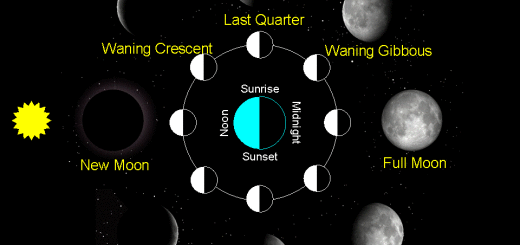Universe, Galaxies, Milky Way galaxy, Solar System, Origin of Universe and Stages of Big Bang
Each galaxy in the universe has a distinctive shape, The difference in the shapes of galaxies form the universe because each galaxy has a distinctive shape according to the harmony and order of the groups of stars in it, Our galaxy is called the Milky Way galaxy because it appears in the sky at night as a splashing milk or spreading straw.
The Universe
The vast universe is filled with millions of stars, Everything changes in the universe, where Stars always change, Galaxies get away from each other very fast, so the universe is in a state of continuous expansion, The universe is the wide and extended space that contains all the galaxies, stars, planets, moons, living organisms, and everything, The universe is very vast. The Sun and the Earth are tiny parts in the universe. The universe contains about 100,000 million galaxies.
Galaxies
Galaxies are groups of stars that rotate together in cosmic space by the effect of gravity, They are the greatest building units that form the universe, Each galaxy has a distinctive shape according to the harmony and order of the groups of stars in it, Galaxies move away from each other as a result of their regular movement.
Galaxies gather in groups called clusters, Galaxies Clusters are groups of galaxies that rotate together in cosmic space by the effect of gravity, The galaxy to which our solar system belongs is the Milky Way galaxy, The Milky Way galaxy is given that name because it appears in the sky at night as a splashing milk or spreading straw.
The Milky Way galaxy
It is considered one of the spiral galaxies. It contains all the stars we see at night in the sky. The Sun is a star of millions of stars that rotate around the centre of the Milky Way galaxy in fixed orbits.
In the Milky Way galaxy: The old stars (the older) gather in the centre surrounded by the small stars (the recent) and are located in the spiral arms of the galaxy.
The solar system
The solar system contains the Sun and eight planets revolving around the Sun, The solar system is located in one of the spiral arms of the Milky Way on the edge of the galaxy, The Sun takes about 220 million years to complete one rotation around the centre of the galaxy, The Earth is one of the planets that rotate around the Sun.
The Earth rotates in a fixed orbit by the effect of the Sun gravity. The force of gravity is responsible for keeping the planets in their orbits around the Sun and the moons in their orbits around the planets, As the distance between the Sun and the planet increases. the Sun’s gravity decreases, and so the planet‘s movement around the Sun becomes slower.
When the gravity between the Sun and the planets vanishes, The planets will leave their orbits and float in a random fashion in space, and therefore there will be no solar system.
Measuring the distances between the celestial bodies in the universe
The distances between celestial bodies (as stars) are very large, so the distances in space are not measured in kilometres, but they are measured in a unit called Light year. Astronomers don’t measure the distances between stars in kilometres because the distances between stars are very large.
A light-year is a distance covered with light in one year and it equals 9.46 × 1012 km. The speed of light equals 300 000 km/sec., so the distance covered with light in one year = 300 000 x (365 days x 24 hours x 60 min. x 60 sec. )= 9460800 million km = 9.46 x 1012 km.
When the distance between the Sun and a certain star is three light-years. This means that the distance between the Sun and this star= 3 x 9.46 x 1012 = 28.38 x 1012 km.
Expansion of the universe
Distances between galaxies increase as time passes, as galaxies move away from each other in the cosmic space. This phenomenon is known as the “Expansion of the universe”. Expansion of the universe is the continuous separation between galaxies in space as a result of their regular movement. The continuous expansion of space (universe) is due to the movement of galaxies apart.
The origin of the universe
How did the universe originate…?
There was no one to relate what happened but the discoveries in physics and astronomy enabled scientists to trace the history of the universe from the first-second fraction of its evolution, Many scientists believe that the universe emerged from a massive explosion called the Big Bang.
The Big Bang Theory [1933]
The Big Bang theory assumed that:
- The beginning of the universe was a gaseous ball of high pressure, high temperature, and small in volume.
- A massive explosion occurs to this ball for 15000 million years and its components were scattered in space followed by continuous expansion and changing processes till now.
- As a result from this explosion, all forms of matter. energy, space, and time.
Big Bang is a theory that explains the origin of the universe from a massive explosion of 15000 million years and resulted in it all forms of matter, energy, time, and space followed by continuous expansion and changing processes.
Stages of the origin of the universe since the moment of Big Bang:
- Through the Big Bang: The gaseous ball from which the universe originated exploded and the process of expansion and change started.
- Within minutes after the explosion: The temperature becomes about 10000 million degrees. The atomic particles produced from the explosion merged together producing gaseous clouds of hydrogen and helium with a percentage of 75%: 25% respectively. These gases produce the galaxies, stars, and universe through millions of years.
- After about 1000 million years: The previously formed matter merged in the form of masses.
- After about 2000: 3000 million years: Gravity helped in gathering more masses forming Ancestral galaxies leaving areas of empty space between them.
- After about 3000 million years: Galaxies began to form.
- After about 5000 million years: Our galaxy, the Milky Way, took its disc form.
- After about 10000 million years: The Sun was born, Then the Earth and planets were created.
- After about 12000 million years: The earliest life forms began to appear on Earth.
- After about 15000 million years: The universe is as it is now.
In 1964, scientists Robert Wilson and Arno Pinzias coincidently discovered radio waves coming from space. They concluded that these waves are a type of echo of the Big Bang which is still frequented in the universe. TV sets can receive such signals (waves) on the Earth. These scientists have won the Nobel prize for physics in recognition of their discovery.
You can subscribe to Science Online on YouTube from this link: Science Online
You can download the Science Online application on Google Play from this link: Science Online Apps on Google Play
Nebular theory, Crossing star theory, Modern theory, Solar telescope & Hubble telescope
Stars, Galaxies, Solar system, Planets, Moons, Asteroids, Meteors, Meteorites & Comets
Fundamental Forces in nature, Gravitational forces, Electromagnetic forces & Nuclear forces













